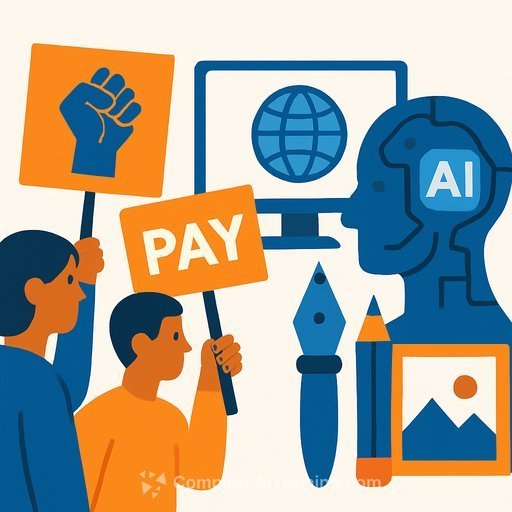Australia moves to protect creatives from AI data mining: what dev teams should prepare for
Australia has ruled out a broad text-and-data-mining exception for AI. Translation for engineering leaders: you won't get a free pass to scrape and train on copyrighted works from Australian creators without permission or payment.
The government will consult developers and the creative sector through a new Copyright and AI Reference Group (CAIRG). The goal is to set a standard that supports innovation while ensuring creators get compensated.
What's on the table
- Fair use boundaries for AI: defining when and how copyrighted material can be used in AI workflows.
- Paid collective licensing: a framework to license large-scale training and downstream use at scale.
- Enforcement mechanisms: practical tools to detect, deter, and penalize misuse.
The stance-no blanket TDM exception
Multiple tech companies pushed for a broad text and data mining exception. The government said no. Attorney-General Michelle Rowland made it clear there are no plans to weaken copyright protections for AI.
For teams training or fine-tuning models: expect to secure licenses, prove data provenance, and keep audit trails. Relying on "everyone else scraped it" won't hold.
Creative sector signals
Australian Society of Authors chief executive Lucy Hayward called current AI training practices the greatest act of copyright theft so far, citing a lack of transparency and ingestion of pirated books. Her position is straightforward: creators should be able to say yes or no and be paid if they agree.
APRA AMCOS chief executive Dean Ormston said tech platforms are shopping for jurisdictions that water down laws. He urged licensing talks that cover both the input used to train models and the output they generate.
What this means for engineers and product leaders
- Audit your data pipelines: inventory training, fine-tuning, and eval sets. Capture source, license, and date. Get vendor attestations.
- Pause unlicensed scraping: update crawlers to honor publisher signals and avoid ingesting Australian works without consent.
- Secure licenses: prepare for collective licensing or direct deals with rights bodies. Prefer datasets with clear, compatible licenses (e.g., public domain, rights-cleared, creator-consented).
- Provenance and logging: maintain training logs and data lineage. Build removal and retraining pathways when rights owners request takedown.
- Output controls: apply content filters, limit style-cloning of living artists/authors, and document how outputs may implicate rights. Consider indemnities for enterprise customers.
- Policy and UX: disclose how your system uses copyrighted material. Update TOS, admin tooling, and regional settings for Australian users.
- Legal check-ins: Australian fair dealing is narrow; research exceptions won't cover broad model training. Involve counsel early.
If you build globally
Jurisdiction shopping won't shield you if your teams, training runs, or users sit in Australia. Design for jurisdiction-aware data policies, regional licensing, and geo-fenced features where needed.
Open questions CAIRG may clarify
- How "fair use for AI" (or similar allowances) will be scoped and applied in practice.
- Who administers collective licenses and how revenue flows to creators.
- Speed and teeth of enforcement, including notice-and-takedown and statutory penalties.
Where to track policy and licensing
Level up your team's AI compliance readiness
If your org is building with LLMs and needs practical training on data governance, licensing, and model risk, explore our curated learning paths for developers and product teams.
The direction is clear: build with consent, prove your sources, and pay where required. Teams that operationalize this early will ship faster with fewer legal surprises.
Your membership also unlocks:






